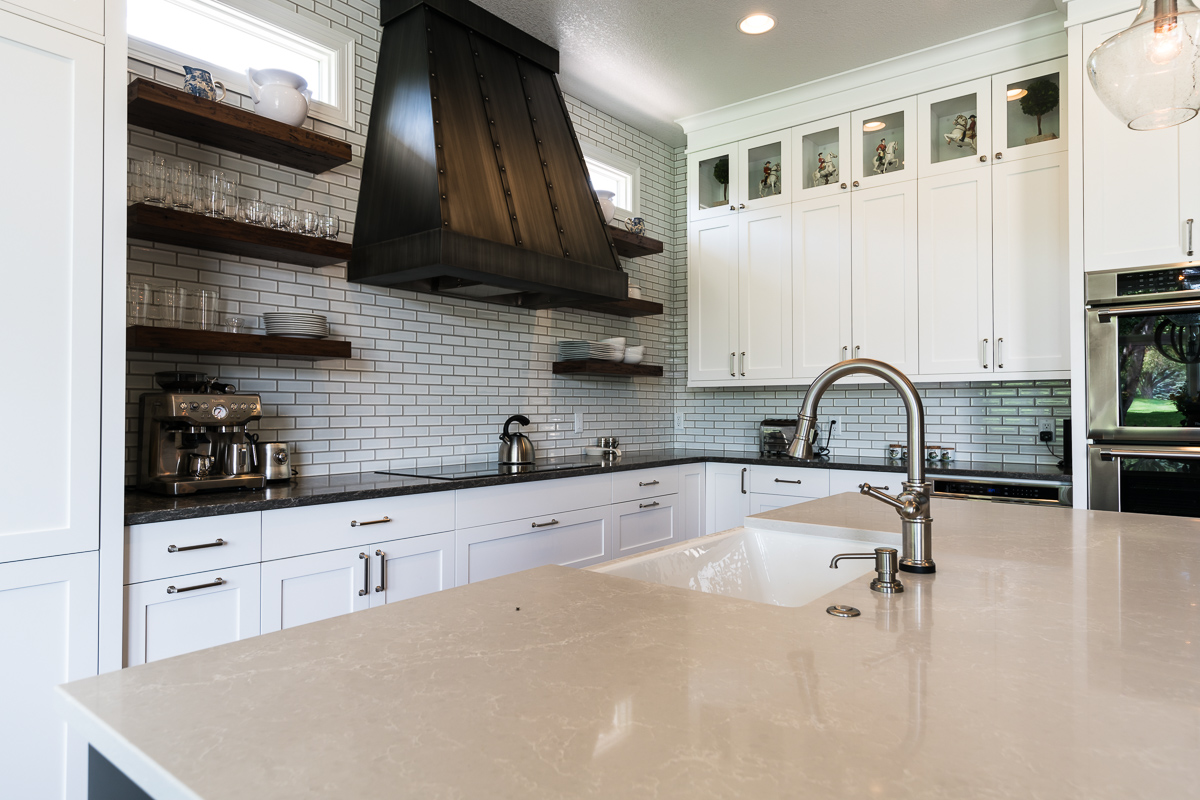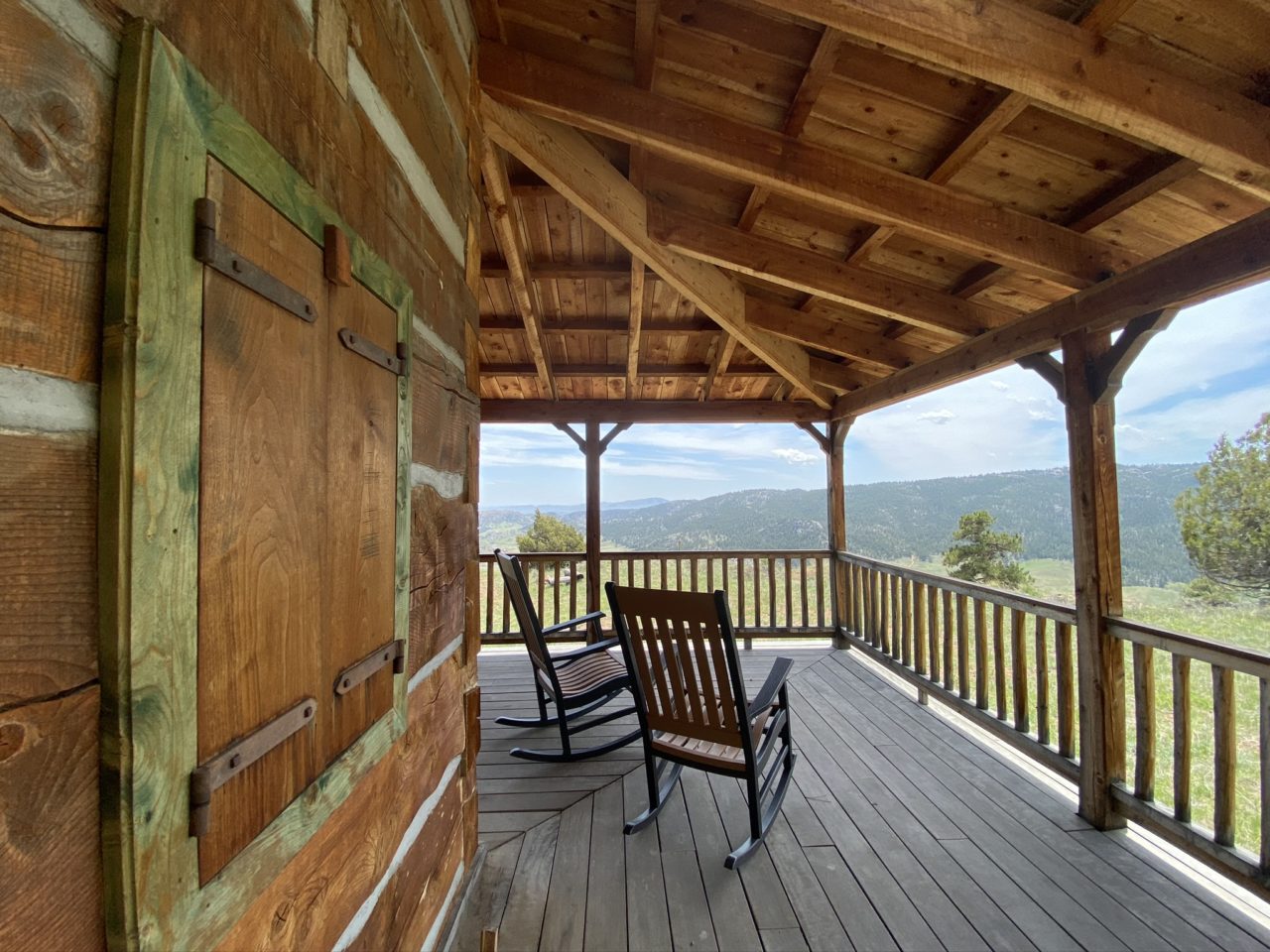Experts offer up tips for remodeling, buying and building in Northern Colorado’s competitive housing climate.
It is no secret that most of us have spent the past year at home. When offices and classrooms closed last March, working remotely became the new normal as we transformed unused guest rooms into home offices and set up makeshift workstations at the kitchen table. Flights were cancelled and groceries were delivered (not to mention the Peloton bike and dumbbells that took over the living room). Suddenly, the home became more than just that—and for a lot of folks, it wouldn’t do.
Even before COVID, Northern Colorado was experiencing an incredibly strong housing market. Interest rates dropped, and although home prices continued to rise, people were chomping at the bit to move, remodel or try their hand at DIY home improvements. All that was amplified when cabin fever took hold, and so began a new surge in real-life HGTV.
Jason Peifer, loan officer and sales manager at Group Mortgage, says the collective drive to renovate and remodel has been fueled by the pandemic lifestyle we’ve all grown accustomed to: “A few years ago, the home wasn’t necessarily a central part of our lifestyle like it is now. Since people are spending a lot more time at home, they’re noticing all sorts of imperfections they might have overlooked before, or they’re realizing that their space just doesn’t suit them as well as it could.”
Deciding what to do about those things is where it gets tricky. In some cases, it makes the most sense to hire a remodeler, or if the issue is purely cosmetic, to tackle those small improvements yourself. Other times the smart thing to do is change your living situation altogether—in other words, to buy a new house or build one from scratch. It all depends on the current housing climate and where your money is best spent based on your wants, needs, timeline and budget.
Remodeling

When we find particulars we don’t like about our home, often our first thought is to remodel. And with so much extra time on our hands, now might be the perfect time to address those dated or unfinished parts that have the potential to add value to your property. But there’s a catch: in today’s housing market, you need to stay put in order for a remodel to be worth it.
Harry Poehlmann, owner of Poehlmann Construction and Basements 4 You, says the cost of remodeling is rising due to lumber shortages and an increased demand for material. The price of lumber, in particular, has nearly tripled over the last year, leaving contractors no choice but to tack that expense onto the homeowner’s bill. Suffice it to say, “fix and flips” aren’t as big of a trend anymore—and they’re certainly not as profitable as they used to be.
“The cost of homes is going up along with the cost of materials, so we’re seeing people remodel if they really like their location, their neighbors or their yard,” Poehlmann says. “Empty nesters are also realizing that their monthly payment wouldn’t change much if they were to downsize, so they’re deciding to stay in their bigger house and put their money toward a remodel instead.”
 Homeowners are catching on, and with interest rates so low, Peifer says a lot of them are refinancing for extra cash to put toward a remodel. Essentially, they’re able to borrow more money for the same monthly payments, which gives them an extra few hundred dollars (plus their vacation savings from cancelled trips) to do some improvements around the house.
Homeowners are catching on, and with interest rates so low, Peifer says a lot of them are refinancing for extra cash to put toward a remodel. Essentially, they’re able to borrow more money for the same monthly payments, which gives them an extra few hundred dollars (plus their vacation savings from cancelled trips) to do some improvements around the house.
“When you look at what one stimulus payment does versus $250 to $300 per month for every household for the life of their loan, I think we’ll reflect on this time and see that the real stimulus was provided by all the refinance activity,” Peifer explains. “That will really contribute to the economic recovery of our country in the coming months, and it’s been keeping contractors at work through all this.”
Peifer jokes that last year’s word was “social distancing” and this year’s word is “backorder,” and he has a point. Most contractors are booked out months in advance, which makes it trickier for homeowners to get on their schedule for a remodel. Poehlmann suggests looking for a contractor two to six months before you want to start the project so you can hit the ground running when the time comes.
“It’s really important to interview multiple contractors to get an idea of what their work is like and what it’d cost,” Poehlmann says. “Look at pictures on their website, check their referrals and see if they offer warranties on their work. Ask about dust mitigation and how they’ll respect your privacy during the project. Make sure they also carry general liability insurance and workman’s comp—those are the elements of professionalism that really make a difference.”
 Not only that but see what you can do as the homeowner to keep the project on schedule. Poehlmann says people can make the most of that two to six month waiting period by picking out products in advance, like flooring, countertops and paint colors, and sticking to those decisions rather than jumping around. He also says it is best to leave the construction phase to the remodeler as opposed to taking a DIY approach.“
Not only that but see what you can do as the homeowner to keep the project on schedule. Poehlmann says people can make the most of that two to six month waiting period by picking out products in advance, like flooring, countertops and paint colors, and sticking to those decisions rather than jumping around. He also says it is best to leave the construction phase to the remodeler as opposed to taking a DIY approach.“
A lot of people think they can save money by doing parts of the project themselves, but it’s actually the opposite,” he explains. “Your contractor will have to go over your work and fix things, which will slow the project down and cost you in the long run. Plus, when you try to be your own contractor, your subcontractors will charge you two to three times more than what they’d charge a general contractor because they know they’ll have to help manage you and keep you on schedule.”
Cutting corners is where Poehlmann says projects go south in terms of both time and money. He says there are three types of jobs—cheap, fast and good—and that you can only have two of the three: “A cheap, fast job will not be good; a good, cheap job will not be fast; a fast, good job will not be cheap. If you think someone can give you all three, you are going to be in for a big disappointment.”
Buying
Long story short, home remodels aren’t necessarily the best option for someone who would need to make a lot of changes in order to truly love where they live. And, with the housing market as competitive as it is, buyers aren’t necessarily looking for the latest and greatest thing when they’re on the hunt for a new home. Most of them just want to get under contract while rates are low, then they’ll tackle any desired improvements later.
 Odds are you would get multiple offers on your home if you listed it as-is (minus necessary repairs), which would give you a jump-start on finding a home that better suits you. Lorraine Schaeffer, Realtor and broker at NorthWest Real Estate, says the key is getting yourself in the best position to buy so you’re ready to make an offer when the right home comes along.
Odds are you would get multiple offers on your home if you listed it as-is (minus necessary repairs), which would give you a jump-start on finding a home that better suits you. Lorraine Schaeffer, Realtor and broker at NorthWest Real Estate, says the key is getting yourself in the best position to buy so you’re ready to make an offer when the right home comes along.
“When people are getting ready to move, they’re looking at ways they can get ahead since inventory is so limited and things are very competitive,” she says. “You really need to be pre-approved, not just qualified, and have all your paperwork in to your lender. It’s certainly possible to get into a house with no money down, and there are lots of first-time homebuyer programs out there to help with that. But the more you can put down the better, even if that means selling your old house first to take out that cash equity.”
 Any lender will agree—Peifer says luck is where preparation meets opportunity, so if you want to get lucky and land a house you love, you must be prepared. That means setting aside money in advance for a down payment and knowing what your current home’s value is so you have an idea of what you can afford, as well as having the right team of people working together on your behalf.
Any lender will agree—Peifer says luck is where preparation meets opportunity, so if you want to get lucky and land a house you love, you must be prepared. That means setting aside money in advance for a down payment and knowing what your current home’s value is so you have an idea of what you can afford, as well as having the right team of people working together on your behalf.
When looking for an agent, Schaeffer suggests reaching out to people you know who can provide contacts or referrals for contractors, lenders and agents they know and like in the area. She says it’s important to find an agent who is held to the standards put in place by the National Association of Realtors (NAR), rather than simply calling the listing agents on properties you’re interested in.
“When you commit to one Realtor, they will work really hard to catch properties before they come on the market so you can be one of the first potential buyers,” she says. “You can also tap into their network of local lenders and builders who do really great work. It’s easy for people to get a good rating online, but that doesn’t necessarily mean you’re going to be happy with what they do, so having a reference from your agent is worth a lot more than those reviews.”
Building
After looking at some properties, you might decide that what you really want is a brand-new house designed just for you. It’ll cost more, but with the competitiveness of resale homes (many of which end up having multiple offers over the listing price), the idea of a new build becomes more palatable.
For one, new construction is quicker and easier to get into because there is less competition, and most builders operate on a first-come, first-serve basis. Christina Mueske, a Realtor who handles both resale homes and new builds at The Group, Inc., says this option has become more attractive to people who are tired of competing for resale properties and want to get out of the “mosh pit” market.
“The velocity of sales in new construction is at a pace that we have truly never seen in Northern Colorado,” she says. “Local, regional and national builders have not been able to keep pace with the demand as residential resale inventories have dropped to historic lows, pushing more and more people into new construction homes.”
 Aside from the lack of competition that drives up prices, Mueske says there are other perks to building a new home. Builders often work with preferred lenders that provide incentives for working with them—for example, they might cover the buyer’s closing costs or credit them money in the design center. This can help to offset some of the other expenses of building a new home, like installing appliances, landscaping and fencing.
Aside from the lack of competition that drives up prices, Mueske says there are other perks to building a new home. Builders often work with preferred lenders that provide incentives for working with them—for example, they might cover the buyer’s closing costs or credit them money in the design center. This can help to offset some of the other expenses of building a new home, like installing appliances, landscaping and fencing.
However, many new developments are located in what’s called “metro districts,” which come with their own set of costs. Additional taxes and expenses, like HOA fees, can add up quickly in these areas, costing the homeowner more than they originally bargained for.
“As demand increases and the cost of some building materials like lumber [goes up], many home purchasers are seeing rising lot premiums and overall prices across many new developments,” Mueske says. “I suggest that buyers have a conversation with their Realtor and lender to put the pieces together and see what scenario fits their situation best. It depends on many factors: the market, inventory, interest rates, builder incentives, buyer needs and desired location.”
That’s what it all comes down to: figuring out what’s most important to you, sticking to your decision and working with the right professionals to help you get there. For some, that’ll mean buying an older property with a more mature landscape in an established neighborhood. For others, the appeal of a new home in a metro district is more in line with their goals. Straying from your decision, no matter what that looks like, is where Peifer says your costs start to double or even triple.
“Regardless of whether you’re remodeling, buying or building, taking the time upfront to see into the future a bit is really important,” he explains. “You need to sit down and figure out what your intentions are in order to make smart moves that will benefit you down the road. You’re going to get there; you just might not be there yet. Accept that and start preparing yourself so that you can move forward with your decision when you’re ready.”
Laurel Thompson is a Fort Collins native and CSU alum. When she isn’t writing, you’ll find her soaking up the sun, cooking something delicious, or reading a good book. To comment on this article, email letters@nocostyle.com.







